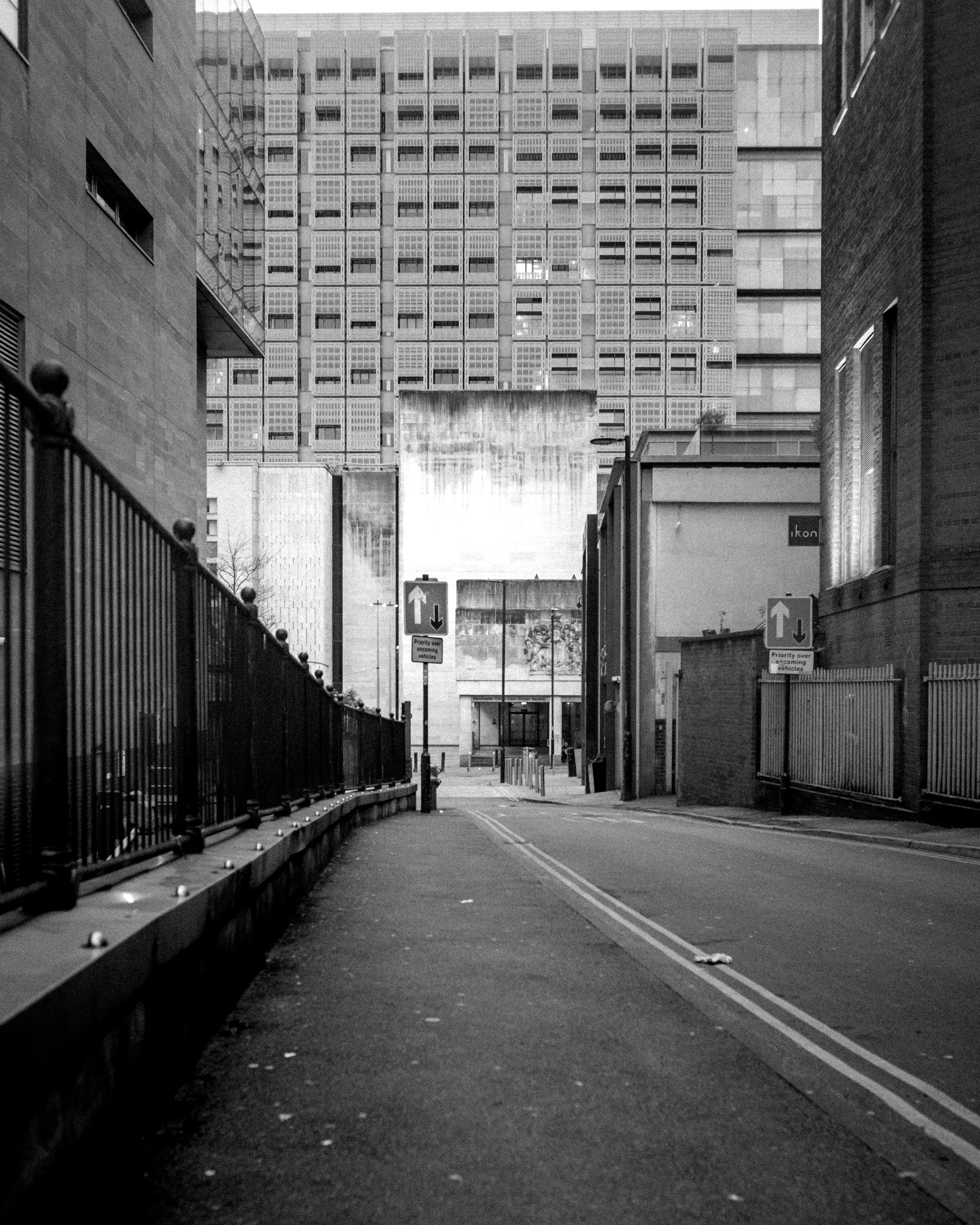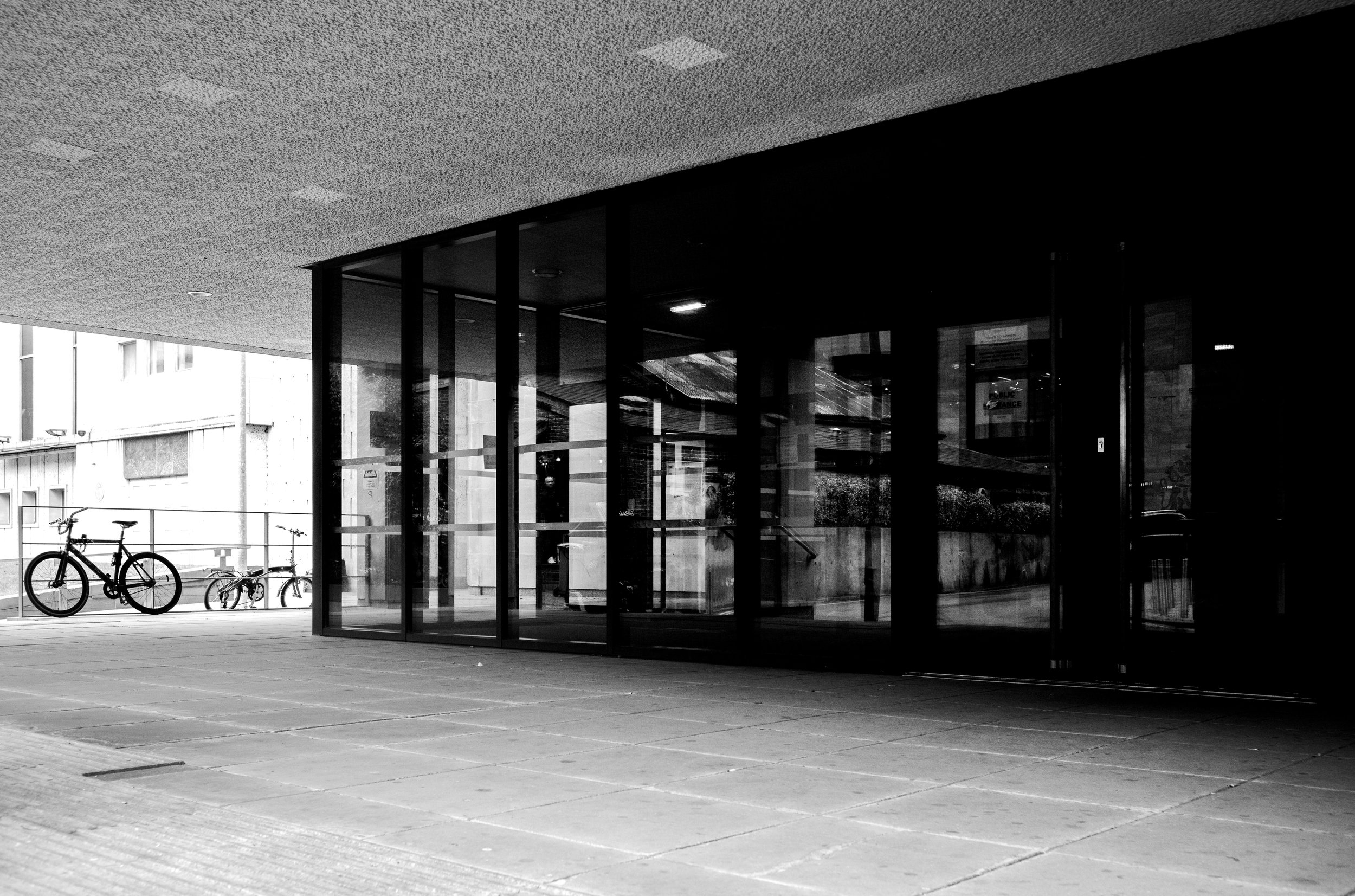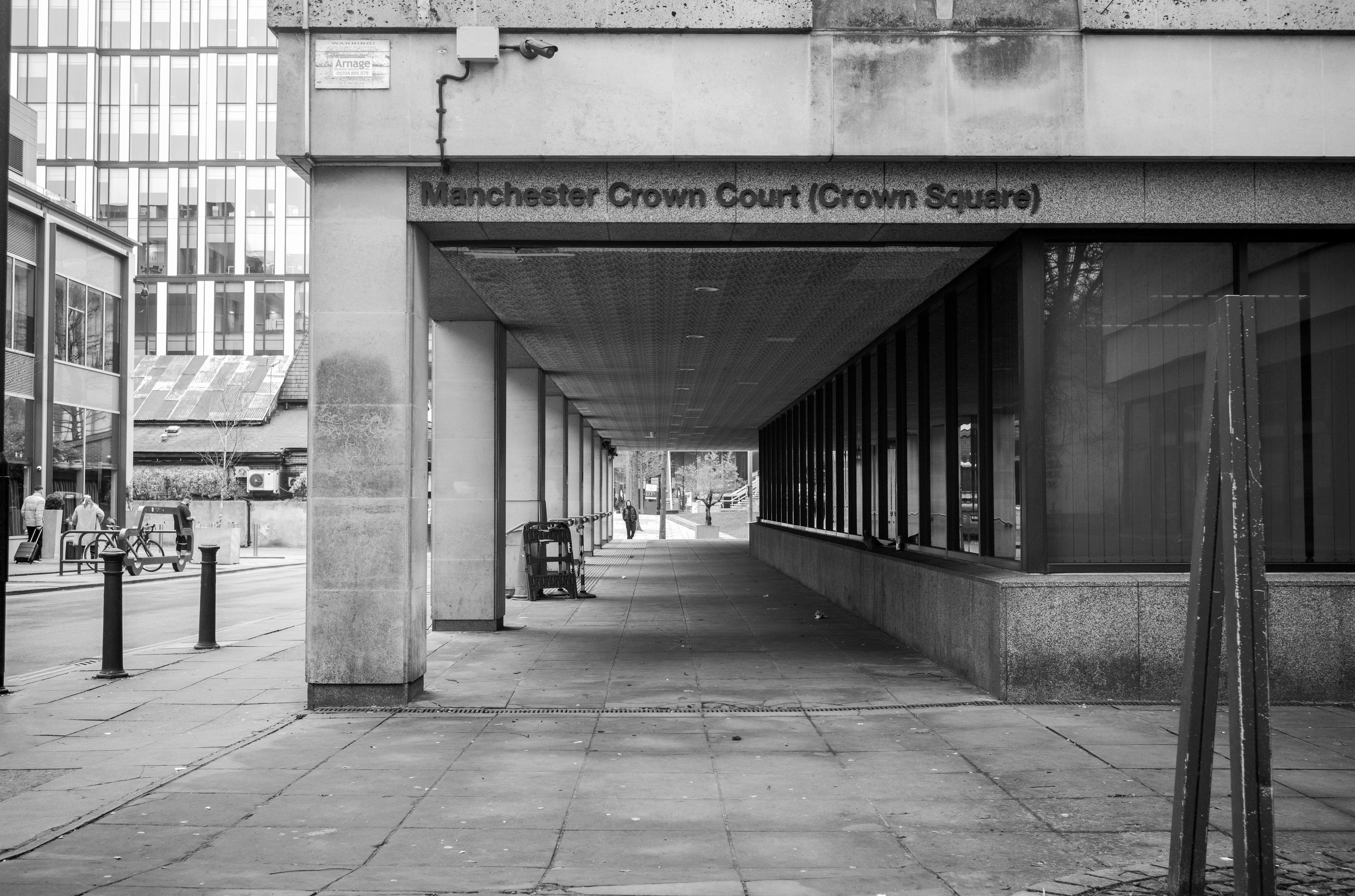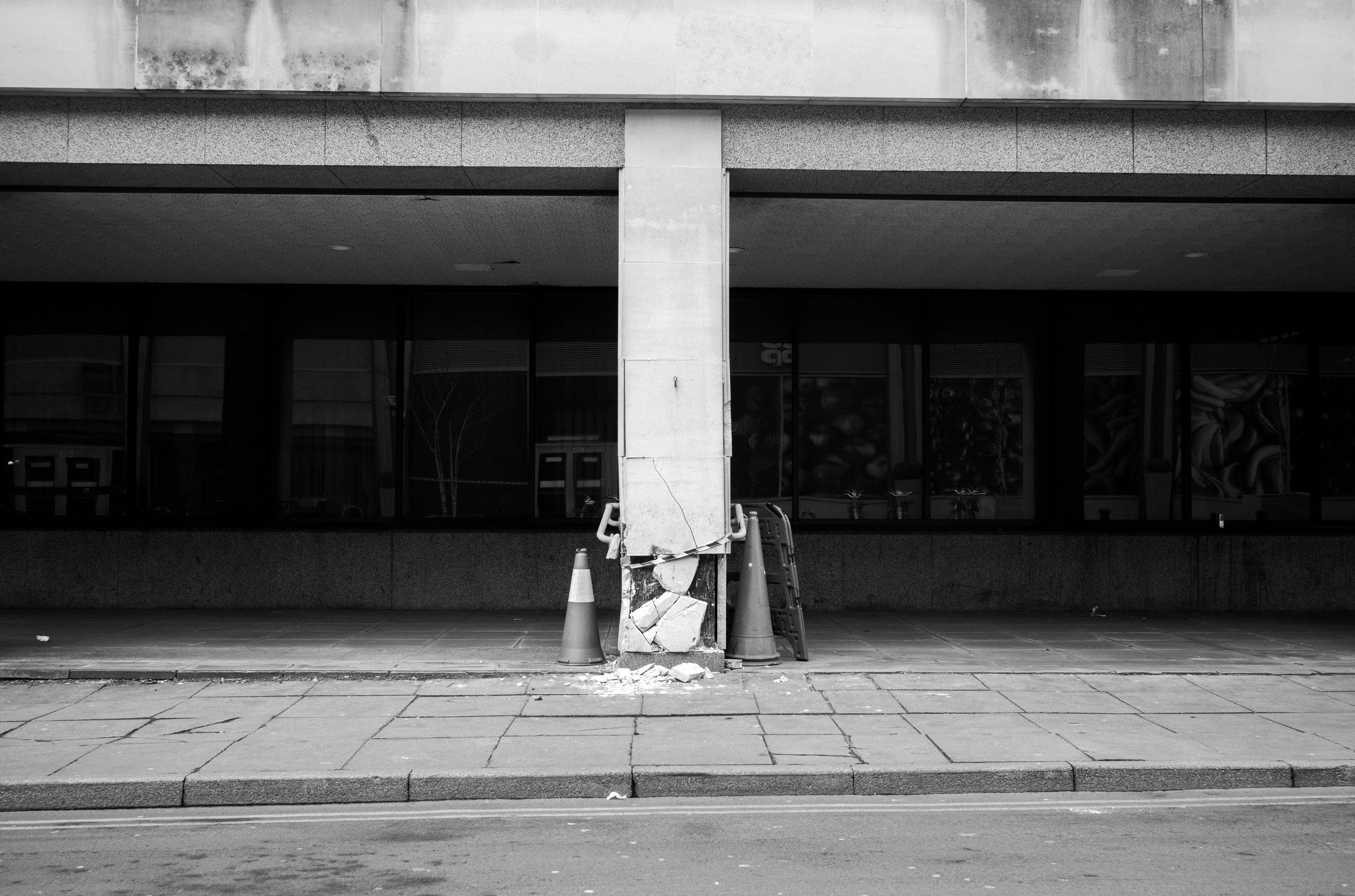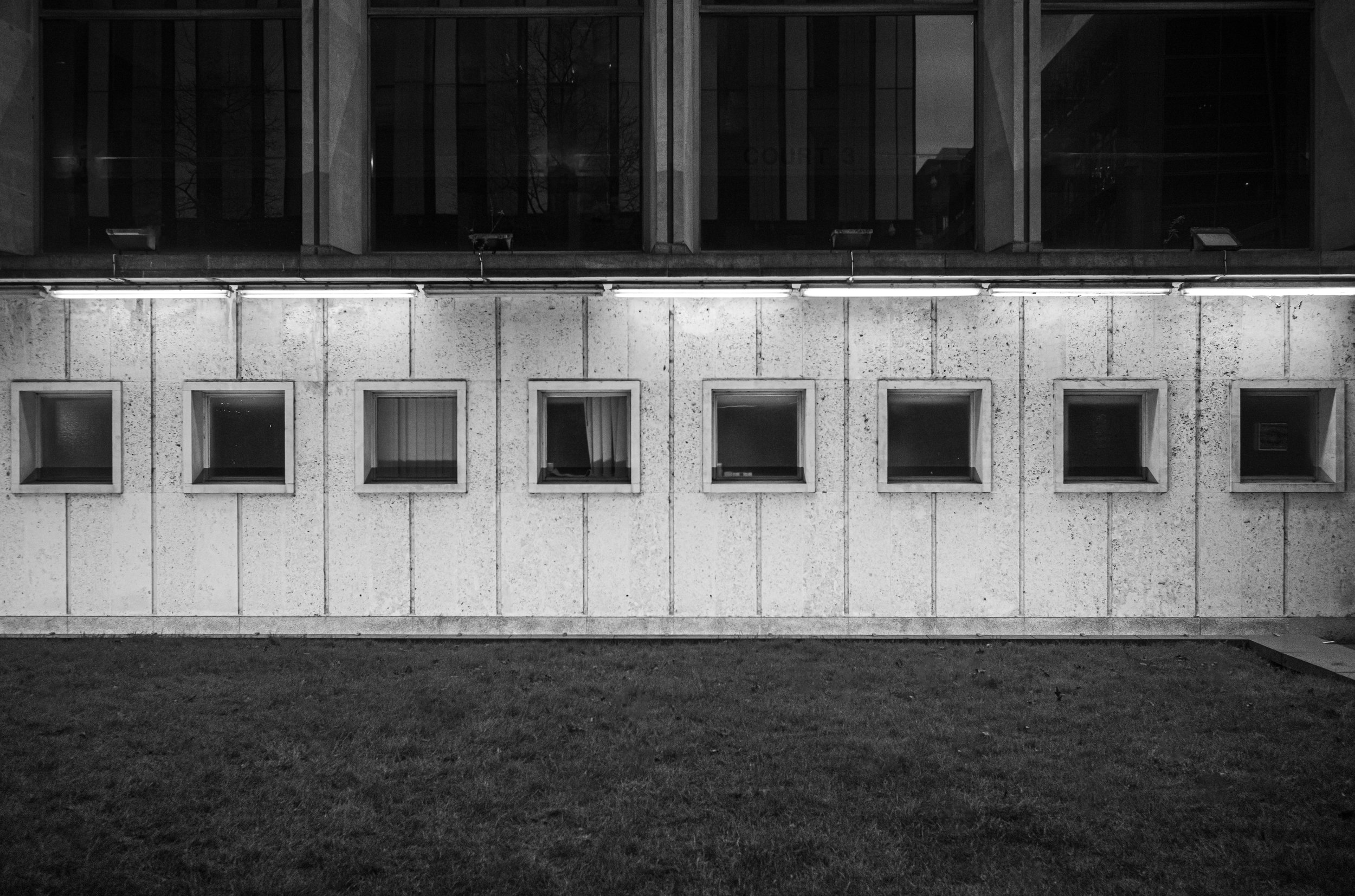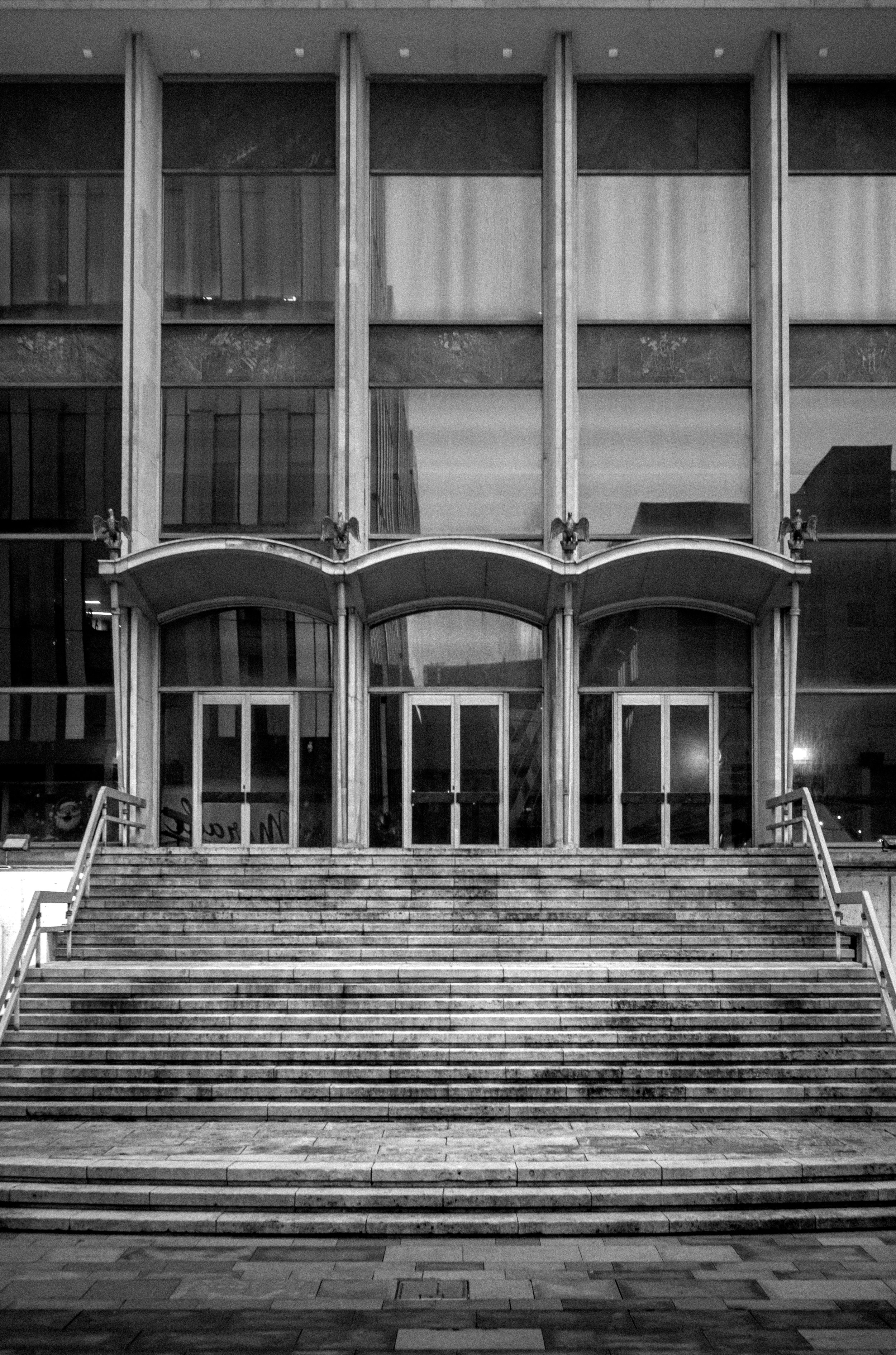
Geometry of Justice: Concrete Truths
(2025)
This series of photographs examines Manchester's Crown Court, a Brutalist monument that embodies both architectural conviction and temporal vulnerability. Designed by Leonard Cecil Howitt in the 1960s and extended in 1986, this concrete structure serves as a subject for exploring how buildings articulate power, weather time, and hold memory within their geometric forms.
The camera seeks to capture what draws me to this building: its uncompromising honesty. The Crown Court doesn't negotiate with its environment, it cuts into Manchester's sky with raw angles that refuse to round the corners with compromise. Each photograph attempts to document how this structure settles arguments through pure architectural syntax, demanding attention through its sheer material presence.
What fascinates me most is how concrete, supposedly permanent and impassive, reveals itself as profoundly alive. Through my lens, I trace how Manchester rain maps time across the building's surface, creating dark stains that track down like tear lines, marking decades of weather against Brutalist certainty. These weathering patterns become my subject as much as the building itself, evidence of how even the most assertive architecture submits to temporal forces.
The geometries draw me in. Each form stacks against the next without decoration or apology, creating compositions that feel like visual arguments about functionality and power. But I'm equally drawn to photographing how later additions cling to the original structure like architectural footnotes, each one diluting the building's initial statement - the visual equivalent of interruption.
My personal history with this building shapes my approach. Three days spent in the civil court during the 1990s taught me how architecture can hold you like sentence structure, how a building develops its own grammar of guilt and innocence written in right angles and sharp shadows. This experience informs my photographic investigation of how judicial architecture is designed to make occupants feel the weight of justice before they even enter the courtroom.
These images pose questions about architectural intention and temporal erosion: How do buildings designed to project permanence reveal their own vulnerability? What happens when structures built to embody certainty become weathered by decades of doubt and change? How do we photograph the relationship between a building's original convictions and its current compromises?
Through this work, I attempt to capture Brutalism at its most honest, an architectural philosophy that tells it straight, without decorative language. Even half-transformed by time and additions, the Crown Court maintains more integrity than most buildings achieve. My photographs seek that moment when the building's mass sits in space like an unargurable truth, demanding that viewers stop, look again, and understand what it's trying to communicate about permanence, conviction, and the courage to weather in plain sight.
